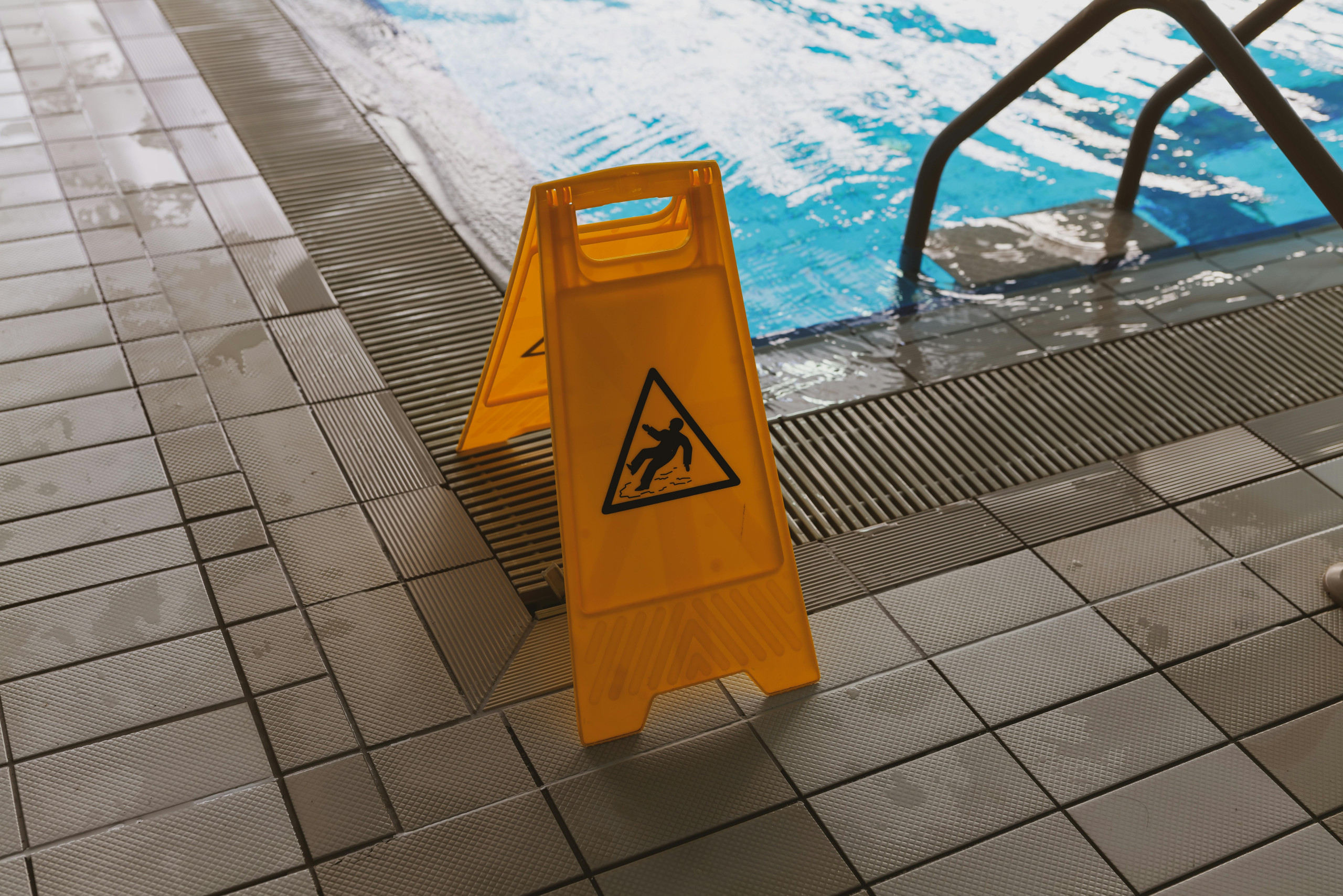In this article, you will discover the impressive array of advanced safety features found in the latest models of heavy-duty die grinders. These powerful tools have come a long way in terms of safety measures, ensuring that operators can work with confidence and peace of mind. From innovative kickback protection systems to intelligent overload protection, each feature works harmoniously to prioritize user safety without compromising on performance. Get ready to explore the cutting-edge advancements that make handling heavy-duty die grinders safer and more efficient than ever before.
1. Automatic Shut-off Systems
Electronic sensing technology
Automatic shut-off systems in modern heavy-duty die grinder models utilize electronic sensing technology to ensure safety during operation. These systems are designed to detect any abnormalities or malfunctions in the grinder’s functioning and automatically shut off the power supply to prevent potential dangers or accidents. By constantly monitoring the grinder’s performance, the electronic sensing technology can identify issues such as overheating, motor overload, or mechanical failure, allowing for immediate intervention to mitigate any potential risks.
Overload protection
One of the key features of automatic shut-off systems in die grinder models is overload protection. This feature prevents the motor from exceeding its safe operational limits by monitoring the motor’s power consumption. If the grinder is subject to excessive load or strain that could cause overheating or damage, the overload protection mechanism activates and stops the grinder to prevent further strain on the motor. This not only protects the grinder from damage but also ensures the safety of the operator by reducing the risk of accidents.
Emergency stop button
To provide an additional layer of safety and control, modern heavy-duty die grinder models come equipped with an emergency stop button. This button, usually located within easy reach of the operator, allows for an immediate and complete shutdown of the grinder in case of an emergency or any unforeseen hazards. By pressing the emergency stop button, you can instantaneously cut off power to the grinder, effectively stopping the rotation of the grinding wheel and preventing any further operation until the situation is resolved.
2. Anti-vibration Technology
Reducing hand-arm vibration syndrome (HAVS)
Heavy-duty die grinders are powerful tools that generate significant vibrations during operation. Extended exposure to these vibrations can lead to a condition known as hand-arm vibration syndrome (HAVS), which can cause discomfort, numbness, and even long-term damage to the user’s hands and arms. To combat this, modern die grinder models utilize anti-vibration technology that significantly reduces the level of vibrations transferred to the operator’s hands and arms. By minimizing HAVS, these advanced safety features ensure the user’s well-being and promote a safer and more comfortable working experience.
Enhancing operator comfort and control
In addition to reducing the risk of HAVS, anti-vibration technology also enhances operator comfort and control. By minimizing the vibrations transmitted to the user’s hands, these safety features enable prolonged and more comfortable use of the die grinder. The reduced vibrations make it easier for the operator to maintain a firm grip on the tool, enhancing control and precision during grinding tasks. This not only improves the quality of work but also reduces the likelihood of accidents or mistakes caused by excessive vibrations or discomfort.
Minimizing muscle fatigue
Using a heavy-duty die grinder for long periods can lead to muscle fatigue, especially in the hands and arms. Anti-vibration technology helps minimize muscle fatigue by reducing the amount of energy required to hold and operate the grinder. With less strain on the muscles, the operator can work for extended durations without experiencing excessive tiredness or discomfort. This not only improves productivity but also reduces the risk of accidents caused by fatigue-induced errors in handling the grinder.

3. Safety Guards
Adjustable protective shields
Safety guards are crucial safety features in modern die grinder models that protect the operator from potential hazards during operation. These guards are adjustable and can be positioned to provide optimal protection based on the specific grinding task and workpiece. By shielding the user from debris, sparks, or fragments that may be ejected during grinding, adjustable protective shields significantly reduce the risk of injuries or accidents.
Preventing contact with rotating parts
Die grinders have rotating parts such as the grinding wheel or cutting disc that can pose a significant danger if not properly guarded. Safety guards effectively prevent accidental contact with these rotating parts, reducing the risk of injuries caused by entanglement or contact with sharp edges. By covering the areas around the grinding wheel or cutting disc, safety guards ensure that the operator’s hands or any other body part cannot come into contact with the rotating components.
Enhancing operator safety
Overall, safety guards play a vital role in enhancing operator safety during die grinder operation. By providing a physical barrier between the user and potential hazards, these safety features greatly reduce the risk of accidents or injuries. Whether it’s deflecting sparks, containing debris, or preventing contact with rotating parts, safety guards give operators the peace of mind and confidence to work efficiently, knowing that they are protected from potential dangers.
4. Dust Extraction Systems
Capture and removal of airborne particles
Working with a die grinder generates a considerable amount of airborne particles such as dust, metal fragments, or abrasive particles. Inhaling these airborne particles can pose serious health risks, including respiratory issues and lung damage. To address this concern, modern heavy-duty die grinder models are equipped with dust extraction systems that capture and remove these airborne particles directly at the source. By integrating a vacuum or suction mechanism, these systems effectively collect the particles generated during grinding, minimizing their dispersion into the surrounding air.
Maintaining clean and safe work environment
In addition to protecting the operator’s health, dust extraction systems also contribute to maintaining a clean and safe work environment. By capturing the airborne particles and preventing their dispersion, these systems help keep the immediate work area free from debris, thus reducing the risk of slips, trips, or falls. Furthermore, by collecting the particles in a designated container or filtration system, dust extraction systems facilitate easy disposal of the debris, ensuring a tidy and organized work area.
Preventing respiratory issues
Perhaps the most significant benefit of dust extraction systems is their role in preventing respiratory issues. By removing the airborne particles generated from grinding tasks, these systems greatly reduce the inhalation of harmful substances and minimize the risk of respiratory problems. This is particularly important in industries where workers are regularly exposed to dust or metal particles, as the long-term consequences of inhalation can be severe. By prioritizing the operator’s respiratory health, modern die grinder models with dust extraction systems actively contribute to creating a safer and healthier work environment.

5. Thermal Overload Protection
Automatic shutoff when overheating occurs
Thermal overload protection is a critical safety feature in heavy-duty die grinder models designed to prevent overheating of the motor. When the grinder’s motor starts to reach unsafe temperatures due to prolonged use or excessive workload, the thermal overload protection system detects the rise in temperature and automatically shuts off the power supply. This immediate shutoff prevents the motor from further heating up and potentially reaching a point where it can cause damage or pose a fire hazard. By acting as a safeguard against overheating, this feature ensures the longevity and safe operation of the die grinder.
Prevention of motor burnout
If a motor runs for prolonged periods at high temperatures, it is susceptible to burnout or permanent damage. Thermal overload protection in modern die grinder models prevents motor burnout by monitoring the motor’s temperature and intervening before it reaches critical levels. By automatically shutting off the grinder when overheating is detected, this safety feature protects the motor from sustaining permanent damage, extending its lifespan and allowing for optimal performance over time. This not only saves the user from potential costly repairs or replacements but also ensures the grinder’s reliability and longevity.
Increasing tool lifespan
By effectively preventing overheating and motor burnout, thermal overload protection ultimately increases the overall lifespan of the die grinder. Continuous and prolonged use without sufficient protection can significantly reduce the lifespan of the tool, leading to frequent breakdowns or the need for replacement. However, with thermal overload protection in place, the die grinder remains protected and operates within safe temperature ranges, allowing it to maintain its performance over an extended period. As a result, operators can rely on their die grinders for longer periods, reducing downtime and maximizing productivity.
6. Soft Start Technology
Gradually increasing speed for smoother operation
Soft start technology is a valuable safety feature in modern heavy-duty die grinders that ensures a smoother and safer operation. When the grinder is switched on, this technology gradually increases the rotational speed of the grinding wheel or cutting disc, minimizing sudden jerks or kickbacks that can occur when starting a tool at full speed. The gradual acceleration provided by soft start technology allows the operator to maintain better control over the tool from the moment it starts, reducing the risk of accidental slips or loss of control.
Reducing sudden jerks or kickbacks
Sudden jerks or kickbacks can be hazardous when using a die grinder, as they can potentially cause the tool to slip from the operator’s grip or make an unintended movement. Soft start technology eliminates these sudden jerks or kickbacks by providing a controlled and gradual acceleration from the moment the grinder is powered on. This smooth startup enables the operator to anticipate the tool’s behavior and maintain a secure grip, keeping both the operator and the workpiece safe throughout the grinding process.
Improving user control
With its ability to eliminate sudden jerks or kickbacks, soft start technology significantly improves user control over the die grinder. By gradually and smoothly increasing the speed of the grinding wheel or cutting disc, this safety feature allows for precise maneuverability and enhanced handling. The operator can confidently guide the tool, ensuring accurate and consistent results. Improved user control not only promotes safety but also enhances the overall efficiency and quality of the work being performed.

7. Ergonomic Design
Reducing operator fatigue and discomfort
Ergonomic design is a key consideration in modern heavy-duty die grinder models to ensure operator comfort and minimize fatigue. By incorporating ergonomic features such as soft-grip handles, contoured grips, and well-balanced weight distribution, these grinders are designed to reduce the strain on the operator’s hands, wrists, and arms. The ergonomic design helps eliminate unnecessary stress and discomfort, allowing for extended periods of use without experiencing excessive fatigue or pain.
Optimal weight distribution
Weight distribution plays a crucial role in the overall ergonomics of a die grinder. A well-balanced grinder with optimal weight distribution minimizes the operator’s effort in maneuvering the tool, ensuring greater control and reducing the strain on muscles and joints. Modern heavy-duty die grinder models take into account the balance of the tool during the design phase, aiming to provide operators with a comfortable and stable grip that allows for precise and controlled grinding operations.
Enhancing maneuverability
Ergonomic design also enhances the maneuverability of heavy-duty die grinders, making them easier to handle and control. With carefully designed grips, contours, and weight distribution, operators can navigate the tool more smoothly and accurately, especially in tight or challenging spaces. This increased maneuverability not only ensures greater operational efficiency but also reduces the risk of accidents or damage to the workpiece that can occur due to poor control or handling of the grinder.
8. Variable Speed Control
Adjusting rotational speed as per task requirements
Variable speed control is a valuable feature in modern die grinder models that allows operators to adjust the rotational speed of the grinding wheel or cutting disc as per specific task requirements. Different materials or grinding applications often require different speeds for optimal performance and results. By providing the flexibility to adjust the speed, variable speed control ensures that the die grinder can effectively adapt to various materials and tasks, enabling operators to achieve the desired outcome with precision and efficiency.
Providing versatility for different materials
Not all materials require the same grinding approach or speed. For instance, delicate materials may necessitate lower rotational speeds to minimize the risk of damage or excessive material removal, while tougher materials may require higher speeds for efficient grinding. In a heavy-duty die grinder with variable speed control, operators can easily tailor the rotational speed to the material they are working with, ensuring that the grinder performs optimally and precisely without compromising the integrity of the workpiece.
Optimizing precision and accuracy
Variable speed control contributes significantly to the precision and accuracy of grinding tasks. By allowing operators to fine-tune the rotational speed, this safety feature enables greater control over the amount of material being removed, the depth of cut, and the overall grinding process. Whether it’s achieving a smooth surface finish or accurately shaping a workpiece, the ability to optimize the grinder’s speed enhances precision and accuracy, resulting in high-quality outcomes and minimized errors.
9. Anti-kickback Feature
Preventing sudden tool rotation
An anti-kickback feature is an important safety component in heavy-duty die grinder models, designed to prevent sudden and uncontrollable tool rotation. Kickback occurs when the grinding wheel or cutting disc catches on the workpiece, causing the tool to jerk or rotate unexpectedly. This can not only cause damage to the workpiece but also pose a significant safety risk to the operator. The anti-kickback feature in modern die grinder models detects these sudden movements and immediately stops the tool rotation, preventing accidents and ensuring the user’s safety.
Ensuring operator safety
By actively preventing kickback incidents, the anti-kickback feature ensures operator safety and minimizes the risk of injuries. When kickback occurs, it can propel the grinder forcefully in the opposite direction, potentially causing the operator to lose control or be struck by the tool. However, with the anti-kickback feature in place, these sudden movements are effectively stopped, allowing the operator to maintain a secure grip and position, reducing the likelihood of accidents or harm.
Reducing the risk of workpiece damage
Kickback incidents not only endanger the operator but can also result in significant damage to the workpiece. When the grinding wheel or cutting disc suddenly rotates in the opposite direction, it can create deep gouges, unwanted marks, or even ruin the workpiece entirely. The anti-kickback feature in modern die grinder models helps avoid such damage by promptly stopping the tool rotation, preventing any harmful contact or excessive force on the workpiece. This ensures that the desired results are achieved without compromising the integrity of the workpiece.
10. Lock-on Switch
Enabling continuous operation without holding the trigger
A lock-on switch is a convenient safety feature in heavy-duty die grinders that allows for continuous operation without the need to continuously hold down the trigger. By engaging the lock-on switch, the grinder remains powered on, freeing the operator’s hand from constantly gripping the trigger. This feature is particularly beneficial during long-duration tasks that require continuous grinding, reducing hand fatigue and increasing comfort during extended periods of use.
Providing convenience during long-duration tasks
Tasks that involve prolonged use of a die grinder can be physically demanding and strenuous on the operator’s hand and arm muscles. With the lock-on switch, operators can maintain continuous operation without the need to constantly hold down the trigger, thus relieving strain and reducing muscle fatigue. This added convenience makes it easier to complete time-consuming grinding tasks, improving overall productivity and efficiency.
Reducing hand fatigue
Traditionally, continuous operation of a die grinder requires a constant grip on the trigger, which can lead to hand fatigue and discomfort over time. The lock-on switch eliminates the need for this continuous grip, significantly reducing the strain on the operator’s hand. By enabling a hands-free operation, this safety feature makes handling the die grinder more comfortable and ergonomic. It allows operators to focus on the task at hand without experiencing excessive fatigue, enhancing both performance and safety.
In conclusion, modern heavy-duty die grinder models are equipped with a comprehensive range of advanced safety features that prioritize operator safety, comfort, and control. From automatic shut-off systems to anti-vibration technology, and from safety guards to dust extraction systems, these safety features greatly minimize the risk of accidents, reduce operator fatigue, and enhance overall productivity. With thermal overload protection, soft start technology, ergonomic design, variable speed control, anti-kickback features, and lock-on switches, these grinders offer operators a safer and more efficient grinding experience.



